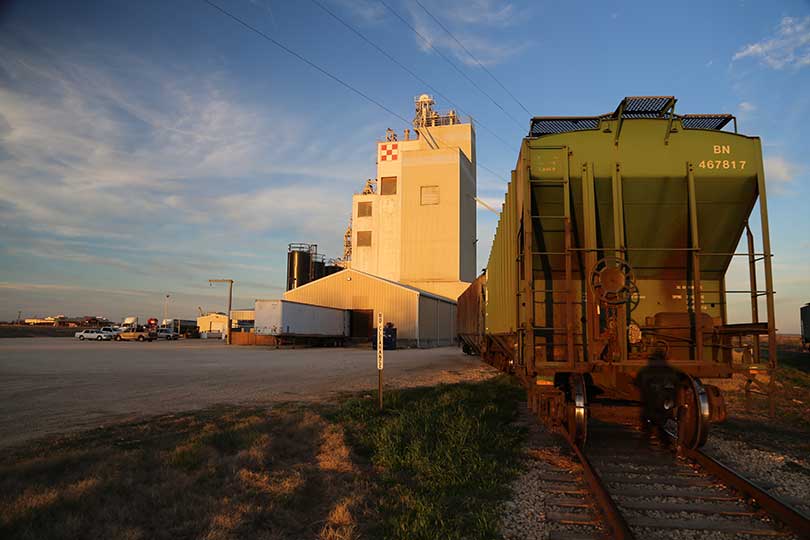Farmers in the Coastal Bend region are nearly complete with corn harvest, and grain elevators are trying to make room for the bumper crop. The bins are full from “phenomenal” milo and corn yields according to Matt Havelka, general manager of Orange Grove Cooperative in Jim Wells County.
The high yields have forced the cooperative to make several adjustments for the increase. They have met the challenge and have moved as much milo as possible to make room for the corn in their bins.
“In doing that, we’ve run into some trouble with moving enough milo, but we also have a bagging system that we revert to on our corn,” Havelka said in an interview with the Texas Farm Bureau Radio Network. “Hopefully, we’re wrapping that part of it up. I’ve got a bin that’s come available. We should start filling bins tomorrow with the remainder of our corn crop.“
He said due to the large yields, they have started using trucks from different carriers to move the milo out of bins to Interstate Grain or ADM ports on the Gulf Coast. The cooperative also works with feedlots in the area to keep the corn moving.
“I think we’ve done a fairly decent job this year as far as getting the milo moved,” Havelka said. “The labor force is shrinking in size, and, due to that, we’re having to run a skeleton crew and work them twice as hard.”
Most corn is shipped within a 100-mile radius and is from Jim Wells County, but some is sourced from Nueces County, according to Havelka. He said farmers are willing to hold their crops in the fields for another day or two when they cannot take another truck.
“Corn tends to weather a whole lot better than milo, so that’s the main priority to get the milo out of the fields and then corn comes in last,” Havelka said.
He noted they are operating way above average.
“Our intake is per one elevator that has the capacity of 400 cars and we’re probably running close to 700 as of right now already in house,” Havelka said.
He said they’ve had the best year ever on their sorghum bushel weights.
“I’ve had several guys around the 5,000- to 5,500-pound mark. As far as to what our average is, I’m going to say 2,500 to 3,000,” he said.

